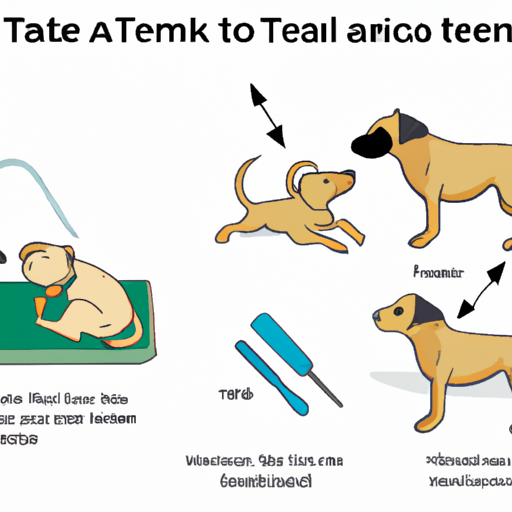In this article, we are going to delve into the nitty-gritty of protecting your furry friend from those pesky parasites – fleas and ticks. Providing your dog with regular flea and tick treatment is an essential part of pet care. It’s not just about keeping your dog comfortable; it’s also about their health. Fleas and ticks carry diseases that can be harmful, even fatal, to dogs. The good news is, with the right knowledge and products, you can prevent these parasites from harming your pet.
Table of Contents
1. Understanding Fleas and Ticks
2. Choosing the Right Treatment
3. Applying Topical Treatments
4. Oral Treatments
5. Collars, Shampoos, and Sprays
6. What to Do Post-Treatment
7. Frequently Asked Questions
Key Takeaways
– Fleas and ticks are common pests that can cause discomfort and disease in dogs.
– Several types of treatments are available, each with their pros and cons.
– Proper application is key to ensuring the effectiveness of the treatment.
– Post-treatment care is important to monitor for any side effects.
Understanding Fleas and Ticks
Fleas and ticks are more than just annoying pests. They can cause serious health problems for dogs, including skin allergies, tapeworms, and Lyme disease. Fleas are small, wingless insects that feed on the blood of mammals. Ticks, on the other hand, are arachnids that also feed on blood and can transmit diseases like Lyme disease and Rocky Mountain spotted fever. To protect your dog, it’s important to regularly check for these parasites and use preventive treatments, like those found on One Top Dog.
Choosing the Right Treatment
When it comes to choosing a flea and tick treatment for your dog, you have several options. These include topical treatments, oral medications, collars, shampoos, and sprays. Each has its pros and cons, so consider your dog’s lifestyle, age, health, and your personal preferences when making a choice. For more information on different types of treatments, check out this guide.
Applying Topical Treatments
Topical treatments, also known as spot-on treatments, are among the most popular options for flea and tick prevention. They are easy to apply and can provide protection for up to a month.
- Start by opening the package according to the instructions.
- Part your dog’s fur between the shoulder blades to expose the skin.
- Apply the treatment directly to the skin, not on the fur.
- Allow the treatment to dry completely before touching the area or allowing your dog to swim or bathe.
Be sure to wash your hands thoroughly after applying the treatment. If your dog has any adverse reactions, such as skin irritation or lethargy, contact your vet immediately.
Oral Treatments
Oral treatments can be a good choice if your dog doesn’t tolerate topical treatments well. They come in the form of chewable tablets or pills. These medications not only kill fleas and ticks but also prevent future infestations.
To give an oral treatment:
- Follow the dosage instructions based on your dog’s weight.
- Some dogs will eat the medication like a treat, but others may need it hidden in a piece of cheese or a special pill pocket treat.
- Monitor your dog for any side effects, such as vomiting, diarrhea, or changes in behavior.
Again, if any adverse reactions occur, contact your vet immediately.
Collars, Shampoos, and Sprays
Flea and tick collars can provide long-term protection, but they must be worn continuously. Shampoos can kill fleas and ticks on contact, but their effectiveness is short-lived. Sprays can be used for immediate relief from pests, or as a preventive measure. For more details on these options, visit this page.
What to Do Post-Treatment
After applying flea and tick treatment, monitor your dog for any signs of discomfort or adverse reactions. Avoid bathing your dog or letting them swim for at least 48 hours after application. This allows the treatment to fully absorb into the skin.
Frequently Asked Questions
Q: How often should I apply flea and tick treatment?
A: Most treatments need to be applied monthly, but this can vary depending on the product. Always follow the manufacturer’s instructions.
Q: Can I use flea and tick treatment on puppies?
A: Most treatments are safe for puppies over 8 weeks old, but check the product label to be sure.
Q: My dog still has fleas after treatment. What should I do?
A: It can take a few days for the treatment to fully work. If your dog still has fleas after a week, contact your vet.
Remember, preventing fleas and ticks is an ongoing task, not a one-time event. By applying treatment regularly and properly, you can keep your best friend safe and healthy.



